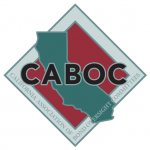
Proposition 39
California Proposition 39, Supermajority of 55% for School Bond Votes (2000)
Voter_Guide_2000_Intro-Contents.pdf Pages 1-4
Voter_Guide_2000_Prop-39 Analysis.pdf Pages 47-51
Voter_Guide_2000_Text-of-Law.pdf Pages 82-83
California Proposition 39 was also known as the School Facilities Local Vote Act of 2000. It was on the November 7, 2000 ballot as an initiated constitutional amendment, where it was approved.
The primary impact of Proposition 39 was to reduce the threshold required to pass local California school district bond issues from a two-thirds (66.67 percent) supermajority vote to a 55 percent supermajority vote.
Prior to the passage of Proposition 39, about 60% of local school bond ballot questions succeeded in getting the previously required 2/3rds vote. In the wake of its passage, about 75% of local school districts are passing with the 55% requirement. On February 5, 2008, thirty-nine school districts asked for more funding. Thirty requests were approved by voters. Eighteen of the thirty that passed would have failed to gain approval before Proposition 39 (these eighteen got more than 55% but less than 67%). The eighteen that passed because of the 55% threshold that would not have passed with a 2/3 threshold added $2.3 billion in new spending.
Election results
| Proposition 39 | ||||
|---|---|---|---|---|
| Result | Votes | Percentage | ||
| 5,431,152 | 53.4% | |||
| No | 4,756,311 | 46.6% | ||
Constitutional changes
Proposition 39:
- Amended Section 1 of Article XIII A.
- Amended Section 18 of Article XVI.
They also characterized the court decision as a victory because they said in the past LAUSD officials have failed to even respond to requests from charter operators for school space.
The association said dozens of members received no response from the district last year when 81 charter operators applied for space. Of those who received space many were given offers that simply did not meet their needs.
Local charter operators who have been requesting facilities from the district hope this decision will finally get them the classroom space they need.[1]
Text of measure
Title
The ballot title was:
School Facilities. 55% Local Vote. Bonds, Taxes. Accountability Requirements
Initiative Constitutional Amendment and Statute.
Summary
The summary of the ballot measure prepared by the California Attorney General read:
- Authorizes bonds for repair, construction or replacement of school facilities, classrooms, if approved by 55% local vote for projects evaluated by schools, community college districts, county education offices for safety, class size, and information technology needs.
- Accountability requirements include annual performance and financial audits on use of bond proceeds.
- Prohibits use of bond proceeds for salaries or operating expenses.
- Requires facilities for public charter schools.
- Authorizes property taxes in excess of 1% limit by 55% vote, rather than current two-thirds, as necessary to pay school bonds
Fiscal impact
-
- See also: Fiscal impact statement
The California Legislative Analyst’s Office provided an estimate of net state and local government fiscal impact for Proposition 39. That estimate was:
- Increased debt costs for many school districts, depending on local voter approval of future school bond issues (these costs would vary by individual district). District costs throughout the state could total in the hundreds of millions of dollars each year within a decade.
- Potential longer-term state savings to the extent local school districts assume greater responsibility for funding school facilities.
Supporters outspend opponents 6 to 1
Financial supporters of the measure outspent opponents by nearly 6 to 1. $31,395,257 was spent in favor of the measure. $4,996,880 was spent opposing the measure.
Donors to the measure included:
- L. John Doerr, who gave $3,010,000.
- Ann Howland Doerr, who gave $3,000,000.
- John Walton, who gave $3,000,000.
- Reed Hastings, who gave $1,000,000.
Opponents included the Howard Jarvis Taxpayers Association, which contributed $186,158 to defeat the measure.
See also
- California 2000 ballot propositions
- 2000 ballot measures
- List of California ballot measures
- History of Initiative & Referendum in California
External links
Footnotes

